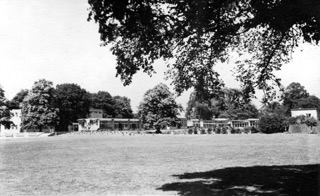…and a final thought… Learning to learn from place part V

“Architecture the silent educator” – could this phrase be applied beyond architecture to our towns and cities, streets and places? Urbanism, the silent educator?
The phrase came from Henry Morris, the chief education officer for Cambridgeshire before World War II and the inventor of ‘village colleges’: secondary schools that did more than serve local children, but local adults too. A Village College was available for evening classes, included a billiards room as well as a public library, and had a school hall that doubled up as a local theatre. A great pioneering idea for a community that was, until Cambridge was transformed by science parks, one of the poorest regions in England. His vision extended beyond the provision of facilities into place-making: hence “architecture, the silent educator”.
At the age of 11, I became a pupil at the second Village College, at Impington, just north of Cambridge. Morris was not just pioneering but ambitious and charismatic, so approached Walter Gropius to design it for him: the man who did not just design the Bauhaus, but invented it’s pioneering curriculum. Gropius was responsible for form and content, aesthetic and ethos.
My parents gave me a camera when I was about 15 and here is one of the first photographs I took. Here is my school: a low modest brick building among trees in an East Anglian landscape. The photograph shows that I was not just impressionable, but impressed. The building, and the community it housed, was a manifestation of caring, and that rubbed off on me.
It was here that I received my ‘silent education’ in architecture (I did not know what words like ‘architecture’ or ‘architect’ meant until much later). I became an idealist and, much later, an architect. My ‘silent education’ was not through words, but somehow I absorbed the optimism of the building. I had no lessons in architectural appreciation or educational theory, however, I got the picture!
What I picked up on a day-to-day basis was that this very simple building provided a socially progressive atmosphere, which complemented the landscape. It was a good place to learn and a wonderful one to look out of the window and day-dream. I did not know of Morris’s slogan when I was silently learning from Gropius and the East Anglian landscape, I only found the phrase last year when I went to the school’s 75th birthday. But I understood exactly what Morris meant because I had been a silent learner and it shaped my life. Increasingly, architecture is seen as a visual art, as an adjunct to sculpture, the making of icons. Gropius saw architecture as a social, rather than a visual art.
We tend to separate our environment into the ‘physical’ and the ‘social’, but if we put them back together, I would say that architecture is an environmental art and that all learning is partly environmental. We all know that, in trying to understand a place, we tune in to the expressions on people’s faces and the tone of their voices.
As an environmental art, architecture has a small, but significant, effect on many things, not a big effect on one thing. As a boy moving into adolescence, I had no vocabulary to help me understand what I was experiencing, nor lessons in how to do so, but I knew what expressions of caring felt and looked like. I cared enough to photograph it.
Professor David Porter AoU is professor of architecture at the Central Academy of Fine Art in Beijing